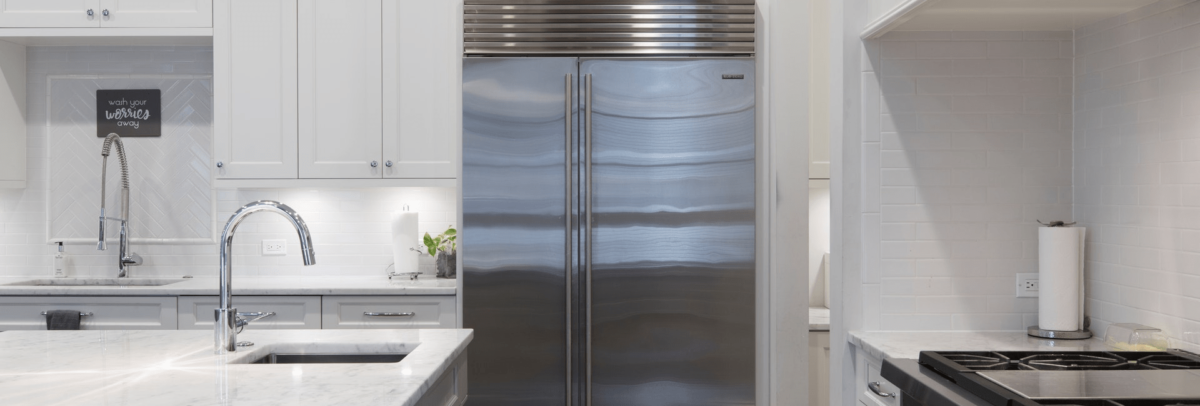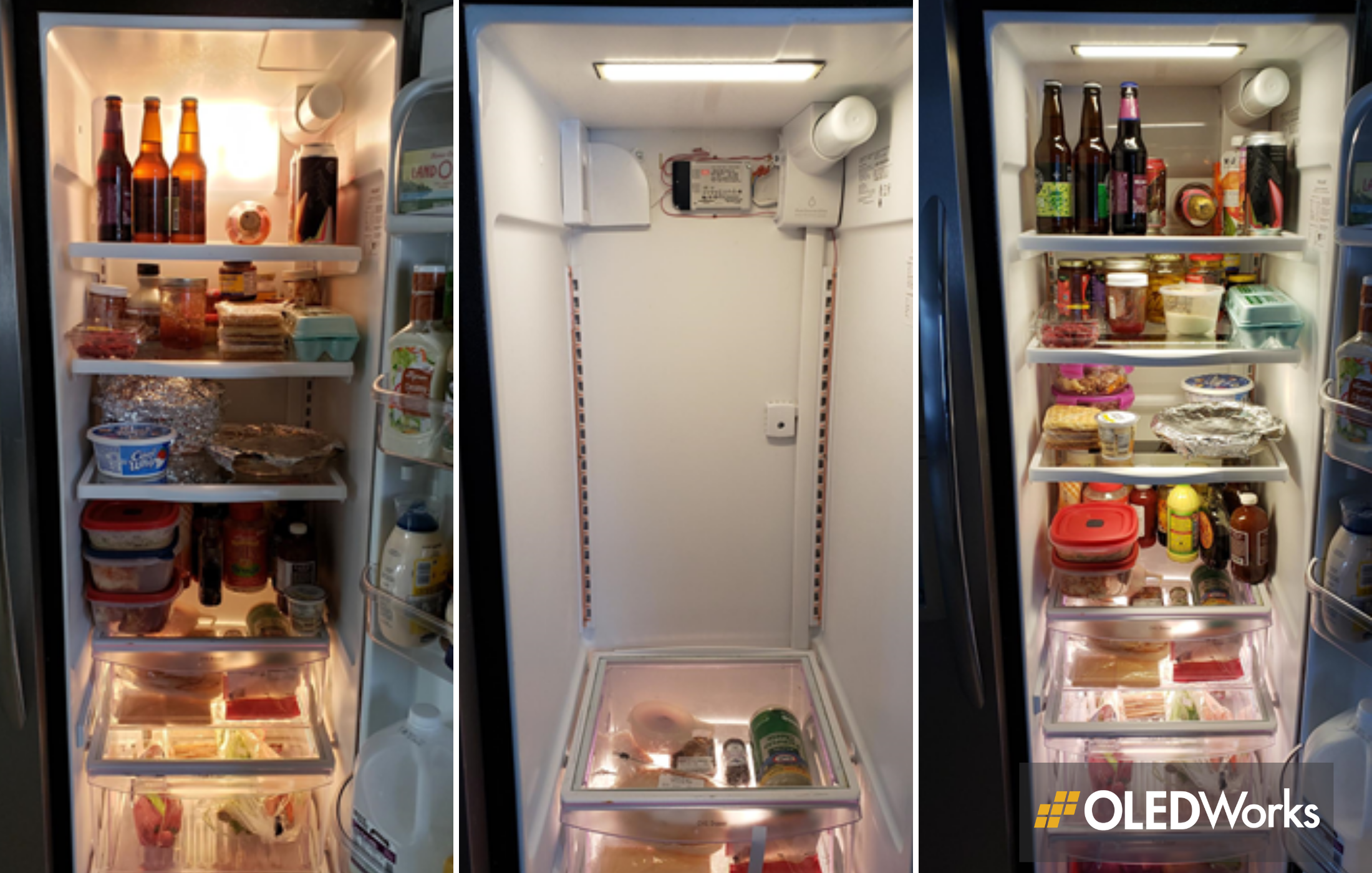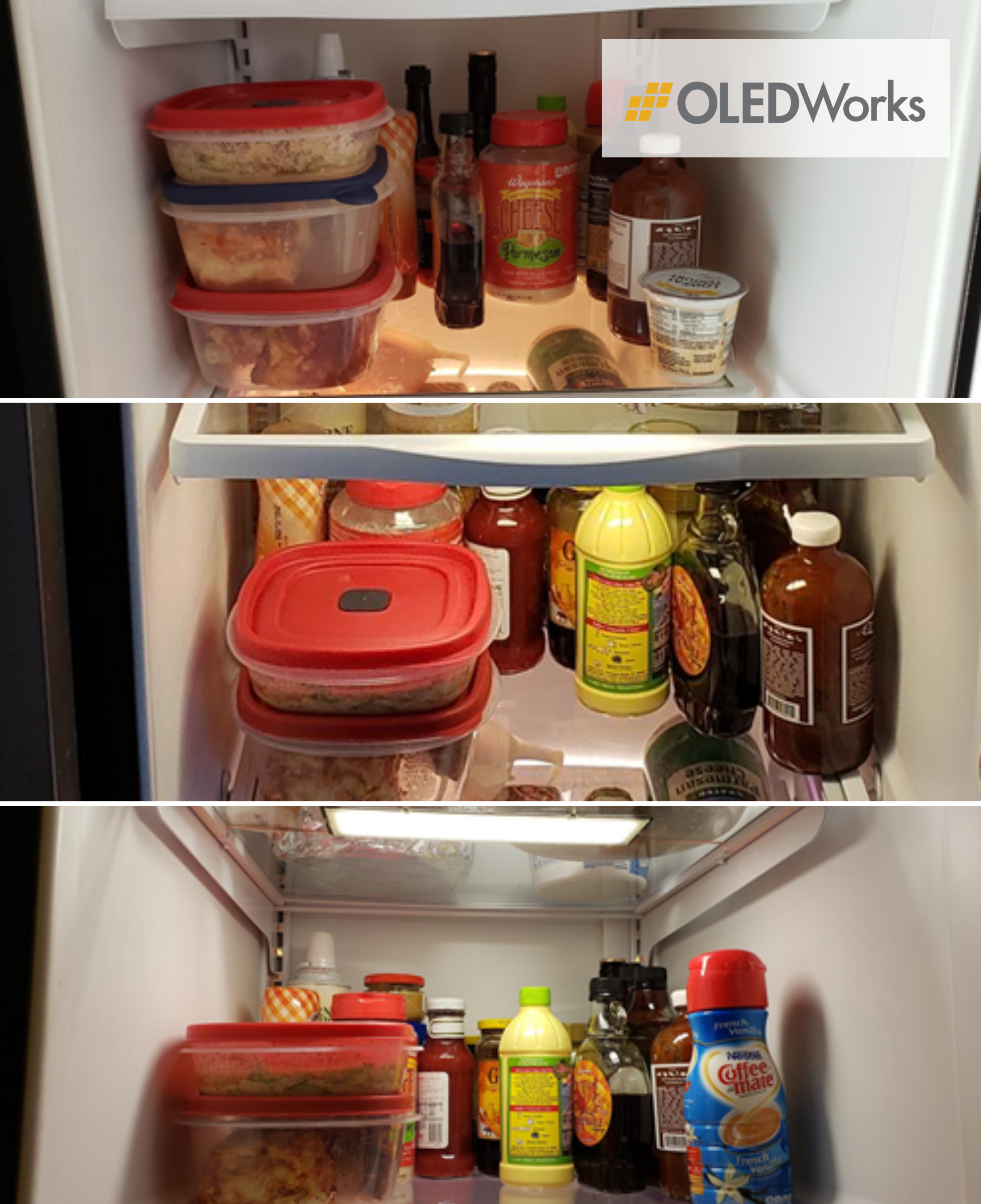
By Dr. Kathleen Vaeth, Director of OLED UX
We often talk about the high quality of OLED lighting and how the OLED lighting experience is like none other. Today I want to highlight some of the other key advantages of OLED lighting panels – their thin profile, low heat output during operation, and excellent color rendering – that can offer new ways to integrate light into our products and provide a superior lighting experience.
Unlike most other light sources, OLED panels have a uniquely thin profile – on the order of 2 mm. Our engineering team was so excited to demonstrate how this can be of huge benefit in the design of embedded products, that they decided to retrofit the interior of a refrigerator with OLED lighting. The refrigerator was chosen as an ideal candidate for OLED integration because a key attribute that consumers consider when purchasing a refrigerator is the available volume inside the unit.
Challenges with Current Refrigerator Lighting
Refrigerator lighting modules, which range from incandescent bulbs at the low end to LED arrays at the high end, can be bulky and often limit food storage in their immediate vicinity. Often, only one or two fixtures are typically used to light the entire interior. With shelving and food containers as obstacles, this can lead to dim and uneven illumination, particularly towards the bottom of the unit. Incandescent lighting fixtures can also generate heat, which is at odds with keeping food cold and fresh. Excellent color rendering can also help to make the contents looks appealing.
With their thin profile, diffuse illumination, high color-rendering capabilities (CRI of 90), and low heat output, OLED lighting panels are a perfect fit for refrigerator applications, expanding the design possibilities for lighting these spaces. Integration on interior side walls or underneath shelving allows for the incorporation of more light in locations closer to the contents without sacrificing storage volume, and low heat output means that OLEDs placed directly above food items won’t sacrifice food freshness.
OLEDWorks Team Retrofits Refrigerator with OLEDs
Our team used the personal refrigerator of one of our engineers to complete the install. The original layout of the unit before the lighting upgrade used two incandescent lighting fixtures, one on the back wall over the top shelf, and another in the crisper. This resulted in poor lighting for the middle shelves, with harsh, uneven illumination throughout.
| Left: Standard incandescent bulbs |
| Center: Single OLED panel |
| Right: Four OLED panels, integrated under shelving |
In the retrofit, the OLEDWorks team decided to remove the top lighting fixture and replace it with four rectangular OLED panels mounted horizontally above each shelf. You can see in the picture of the empty refrigerator above that with only the top panel mounted, the horizontal and vertical surfaces of the interior are more evenly lit with the diffuse OLED illumination, and the final result is homogeneous, glare-free, attractive, and elegant. This is further illustrated in the closeup pictures of one of the shelves before and after the lighting upgrade, which you can see below. The thin profile of the OLED panel facilitates the inclusion of more light into the refrigerator without sacrificing additional space, opening up new approaches for incorporating light into these units.
| Top: Lower shelf prior to OLED installation |
| Center/Bottom: Lower shelf after OLED installation |
It’s clear that OLED lighting’s thin profile, diffuse nature, and low heat output make it an ideal light source for an elegant and comfortable lighting experience. And now that we have seen OLED lighting in our own fridge, we’re eager to see OLEDs adopted in more home lighting products! If you are interested in talking to us about your own product designs that utilize OLED lighting for the home, we’d love to hear about it.
The author would like to thank Dave Scott and Nick Primerano for their work in retrofitting the refrigerator with OLED lighting.





